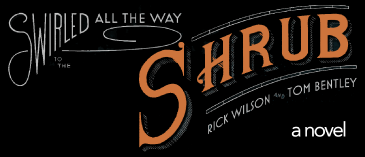Obsidian MacAdoo is a poetess, and she wrote the terrifying yet compelling Green Cackles at Dawn.
Diffusion of Innovations research informs us that far more than half of humanity is afraid of standing out.
Uppermost in the minds of so many of us is the constantly-running question, “What is everyone else doing?” And that other question, “What is everyone else thinking?”
System norms are a thing, as the young folks would say, and they exert a powerful influence on the behavior of the groups that Diffusion theory calls the Early Majority, the Late Majority, and the Laggards.
There are two other groups, however. They are the aptly named the Early Adopters and the Innovators.
The Early and Late Majorities and the Laggards are concerned about the cost of trying something new. Not only the monetary costs, if they lose some money. No, even more compelling than that are the social costs. The loss of face, the loss of street cred and gravitas, if we try something new and it fails.
Not so with the Early Adopters. They are Neophiliacs, they love new ideas and products and processes. They generally don’t care a fig about the consequences of a new thing going wrong, because they accept that possibility from the outset.
And Innovators … they’re creating all the new stuff. They certainly don’t worry overmuch about failure. Their art is totally based upon those four magical words that call them to action, and yet terrify the rest of the population: “This might not work.”
Obsidian MacAdoo, then, is an Innovator. As such, she has little regard for the rigid social norms of 1931 America. And this is reflected, delightfully, in her manner of dress.
Here she is, as we first meet her in The Shrub:
Simultaneously, the front door swooshed open and a young woman in flapper’s evening togs, a feather boa and, incongruously, a man’s gray homburg strode through and made her entrance.
And here she is, far further down the spectrum of Outrageous in her manner of dress, on the second occasion on which we meet her:
After her pause the woman strode into the room. It was the poetess Obsidian McAdoo. She had most certainly collided with couture designer Elsa Schiaparelli—no one else on the planet could possibly have designed such an avant-garde outfit. Her bright pink shoes were high at the heel and long at the toe—not poulaines, quite, but almost. Her dress, also pink, was smooth around the sides and back and sported alternating pink and black pleats in a cutout swath from Obsidian’s navel to her toes, just in front. Black bands of shimmering fabric spiraled around her right arm; the left was all plain pink. Feathers and acorns and the odd mussel shell adorned the fabric. The back was cut way down, quite a bit below the small of her back, and a diminutive pair of black bat-wings were attached to her dress over her shoulder blades, near the edge where fabric met skin.
Most striking, though, was Obsidian’s hat. It was a shoe. A hat, but a shoe. A shoe-hat. An enormous, heavy-heeled, upside-down black shoe, with the heel arcing high above her head and the point of the toe jutting out ahead of Obsidian’s face, evocative of a great carved bowsprit on a sailing ship in days gone by. When she turned her head, it mesmerized all who saw it. Her shoe-hat was Medusa, come back to earth in leather and velvet. Even Massimo gasped in awe.
That Shoe Hat is a slight anachronism–the remarkable Innovator Elsa Schiaparelli crafted it in 1937, not 1931. But this is a bit of license that I’ll happily engage in, for its effect.
Innovators actually must defy convention as an integral part of their innovating. And this defiance often embodies their manner of dress.
In other words–
Plumage matters.
